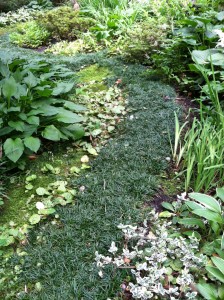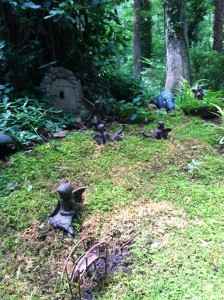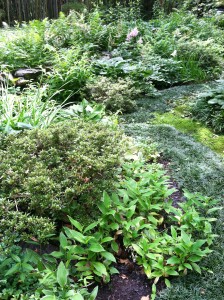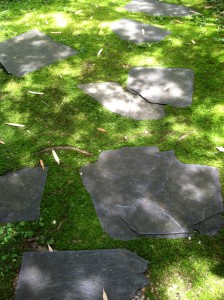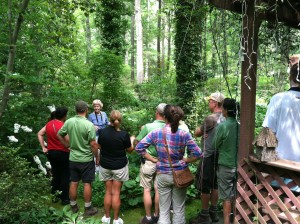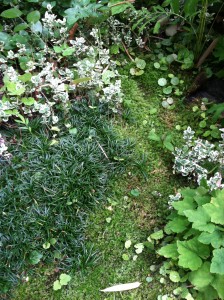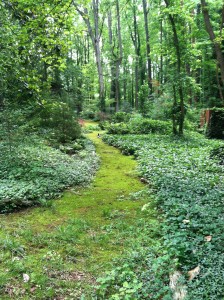Eden Woods: Adventures in Moss Gardening
by Grace Chapman, Director of Horticulture, Lewis Ginter Botanical Garden
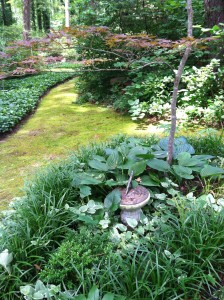
Peaceful mossy path bordered by shade perennials and accented by garden ornaments such as this sundial.
A couple of weeks ago, the Horticulture staff from Lewis Ginter Botanical Garden went on a wonderful field trip to Norie Burnet’s moss garden, Eden Woods. After finding that her 4-acre wooded lot in Bon Air was too shady to grow grass, Norie decided to nurture the moss that was naturally occurring, and she has been doing so for almost 25 years.
Norie is definitely a gardener with an artist’s eye. She creates interest with sweeps of varying textures and endless shades of green. She spoke to us about balancing textures, colors, and shapes in the garden. She also adds whimsy to the garden by tucking fairy houses into shady corners.
Norie has identified 14 different types of moss in her garden, but she has much more than just moss. We were delighted to find a very diverse collection of woodland perennials and we were surprised that some tender perennials proved to be hardy in her garden.
We learned that moss gardens are NOT zero-maintenance gardens, but that they require a different type of maintenance than a traditional garden. Norie taught us that “with grass you mow, with moss you blow.” Moss cannot survive under a thick layer of leaf litter, so keeping the debris cleared with a leaf blower is essential. Moss also likes to be damp. If it dries out too much, it will turn brown, so watering with sprinklers is necessary in times of drought. As with any garden, weeding is also necessary. Norie told us that the beauty of moss gardens is that you can selectively leave “volunteers” that are growing up through the moss. If it were a lawn, some of her favorite volunteer perennials such a Aquilegia (columbine) and ferns would have been mown down. In her garden, they can live in happy harmony with the moss.
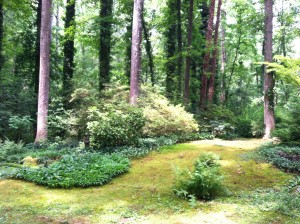
Norie Burnet selectively allows “volunteers” such as this patch of ferns to live amongst the mossy “lawns.”
While a few of the shady corners of Lewis Ginter Botanical Garden have moss naturally occurring, Norie definitely gave us all the inspiration to go a step further. Now that we know some of the essential maintenance tasks required to keep a moss garden healthy, we look forward to nurturing our native mosses. Keep an eye out in the future areas that might be transformed into mossy oases!
Books about moss gardening and moss identification are available for purchase in the Garden Shop or can be viewed in the Lora Robins Library — Members can also check these books out.
